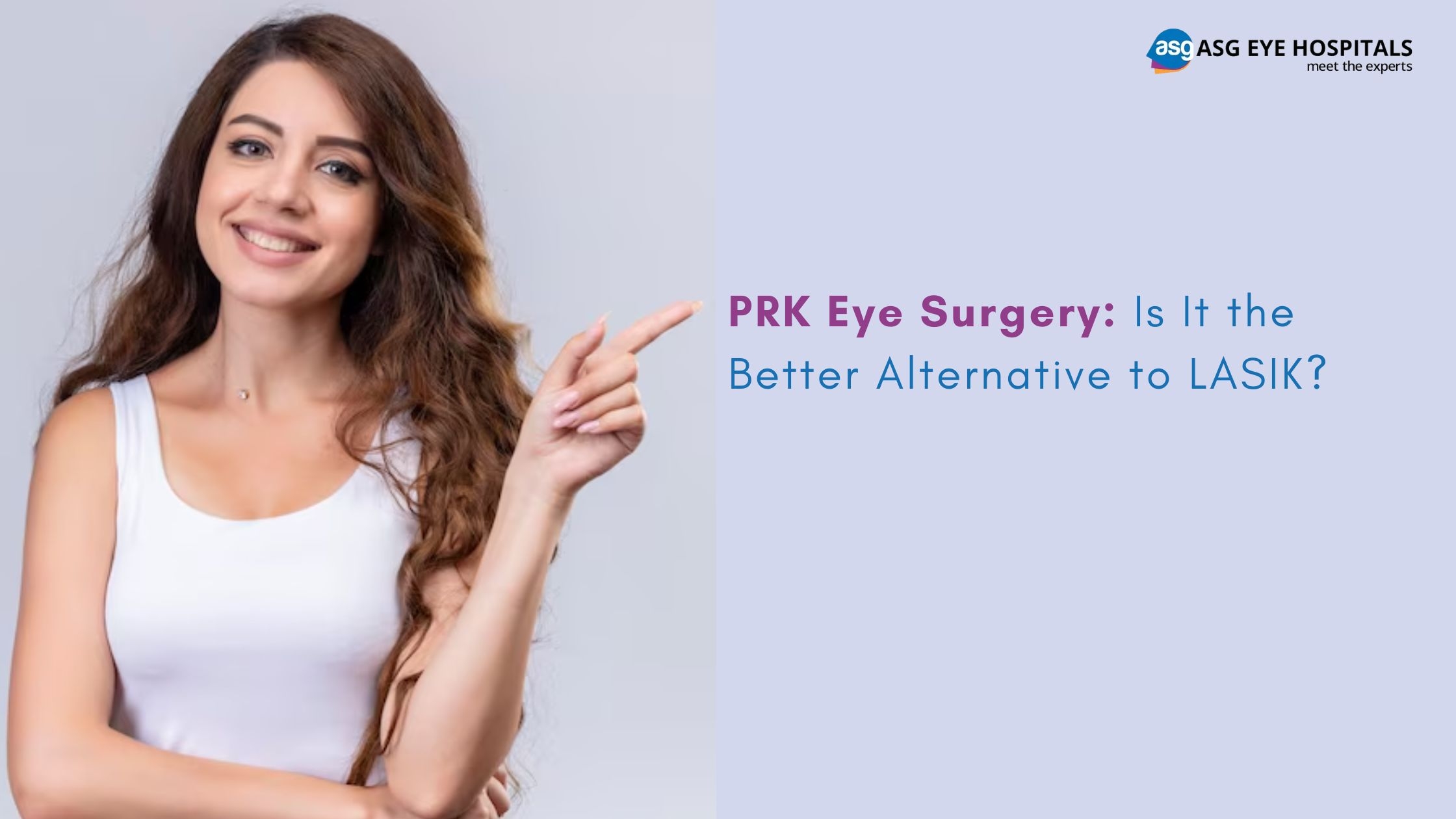PRK Eye Surgery: Is It the Better Alternative to LASIK?

If you're considering laser vision correction, you’ve likely heard of LASIK. But what about PRK eye surgery? While LASIK dominates the conversation, PRK (Photorefractive Keratectomy) is a proven alternative that might be a better fit for certain patients.
In this guide, we’ll explore how PRK eye surgery works, its benefits over LASIK, recovery expectations, and who makes an ideal candidate. By the end, you’ll know whether PRK eye surgery could be your best path to clear vision.
What Is PRK Eye Surgery?
PRK eye surgery is a type of laser vision correction that reshapes the cornea to treat nearsightedness (myopia), farsightedness (hyperopia), and astigmatism. Unlike LASIK, which creates a corneal flap, PRK removes the outer layer of the cornea (epithelium) before applying the laser.
How PRK Differs from LASIK
| Feature | PRK Eye Surgery | LASIK |
|---|---|---|
| Corneal Flap | No flap – epithelium removed | Flap created and repositioned |
| Recovery Time | Slower (5-7 days for vision clarity) | Faster (24-48 hours) |
| Pain Level | Moderate discomfort initially | Minimal discomfort |
| Best For | Thin corneas, high prescriptions | Thick corneas, mild to moderate prescriptions |
How PRK Eye Surgery Works
Step 1: Pre-Surgical Evaluation
-
A thorough eye exam confirms candidacy for PRK eye surgery.
-
Corneal thickness, pupil size, and refractive errors are measured.
Step 2: Removing the Epithelium
-
The surgeon gently removes the outer corneal layer (epithelium) using a brush, laser, or alcohol solution.
Step 3: Laser Reshaping
-
An excimer laser precisely removes microscopic corneal tissue to correct vision.
Step 4: Bandage Contact Lens Application
-
A protective contact lens is placed to aid healing as the epithelium regenerates (3-5 days).
Step 5: Recovery
-
Vision improves gradually over 1-2 weeks, with full stabilization in 1-3 months.
Benefits of PRK Eye Surgery Over LASIK
1. Safer for Thin Corneas
-
Since PRK eye surgery doesn’t require a corneal flap, it’s ideal for patients with thin or irregular corneas who may not qualify for LASIK.
2. No Risk of Flap Complications
-
LASIK’s corneal flap can sometimes lead to dislocation or infection—PRK eliminates this risk.
3. Better for High Prescriptions
-
PRK is often recommended for severe myopia or astigmatism where LASIK may not be suitable.
4. Lower Dry Eye Risk
-
Studies show PRK patients experience less dry eye post-surgery compared to LASIK.
5. Long-Term Stability
-
Both procedures provide permanent results, but PRK may offer more stable outcomes for certain patients.
Disadvantages of PRK Eye Surgery
1. Longer Recovery Time
-
While LASIK offers 24-hour vision recovery, PRK takes several days to a week for clear vision.
2. More Post-Op Discomfort
-
Patients often report burning, itching, or light sensitivity for 3-5 days after PRK.
3. Delayed Visual Clarity
-
It may take weeks to months for vision to fully stabilize.
Who Is the Best Candidate for PRK Eye Surgery?
PRK eye surgery may be right for you if:
✔ You have thin corneas (unsuitable for LASIK).
✔ Your prescription is too high for LASIK.
✔ You engage in contact sports or martial arts (no flap to dislodge).
✔ You have chronic dry eye (PRK is less likely to worsen symptoms).
PRK vs. LASIK: Which Should You Choose?
Choose PRK Eye Surgery If You:
-
Have thin corneas or high prescriptions.
-
Want to avoid flap-related risks.
-
Don’t mind a slower recovery.
Choose LASIK If You:
-
Have thick, healthy corneas.
-
Need fast visual recovery (e.g., for work or driving).
-
Prefer minimal post-op discomfort.
PRK Recovery Timeline: What to Expect
| Time After PRK | What to Expect |
|---|---|
| Day 1-3 | Blurry vision, mild-moderate pain |
| Day 4-7 | Bandage lens removed; vision improves |
| Week 2-4 | Gradual sharpening of vision |
| Month 3+ | Full visual clarity achieved |
Tips for Faster PRK Recovery
-
Use prescribed eye drops (antibiotic + anti-inflammatory).
-
Avoid rubbing your eyes for at least a month.
-
Wear UV-protective sunglasses outdoors.
-
Skip swimming and eye makeup for 2 weeks.
FAQs About PRK Eye Surgery
1. Is PRK More Painful Than LASIK?
-
Yes, initially—but pain is manageable with medicated drops and oral pain relievers.
2. Can PRK Correct Astigmatism?
-
Yes! PRK effectively treats astigmatism, myopia, and hyperopia.
3. How Long Do PRK Results Last?
-
Permanent, though age-related presbyopia may still require reading glasses later.
4. Is PRK Covered by Insurance?
-
Usually no—like LASIK, PRK is considered elective.
Conclusion: Is PRK Eye Surgery Right for You?
While LASIK is more popular, PRK eye surgery remains a superior choice for patients with thin corneas, high prescriptions, or active lifestyles. Its long-term safety and effectiveness make it a compelling alternative.
Next Steps:
-
Consult an ophthalmologist to determine candidacy.
-
Compare PRK vs. LASIK based on your eye health.
-
Prepare for recovery if opting for PRK.
Ready to explore PRK? Schedule a consultation today and take the first step toward glasses-free vision!
- Industry
- Art
- Causes
- Crafts
- Dance
- Drinks
- Film
- Fitness
- Food
- Jeux
- Gardening
- Health
- Domicile
- Literature
- Music
- Networking
- Autre
- Party
- Religion
- Shopping
- Sports
- Theater
- Wellness
- News


